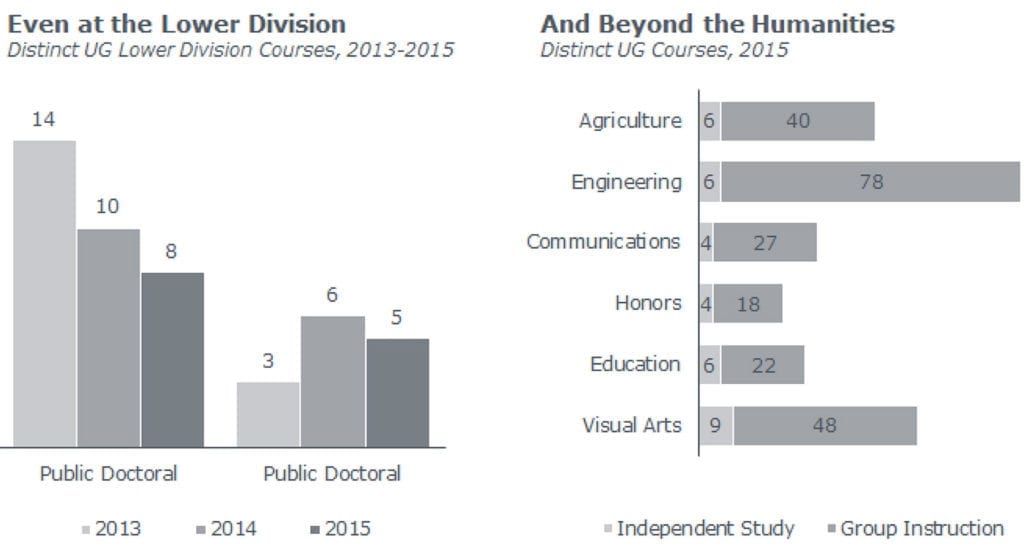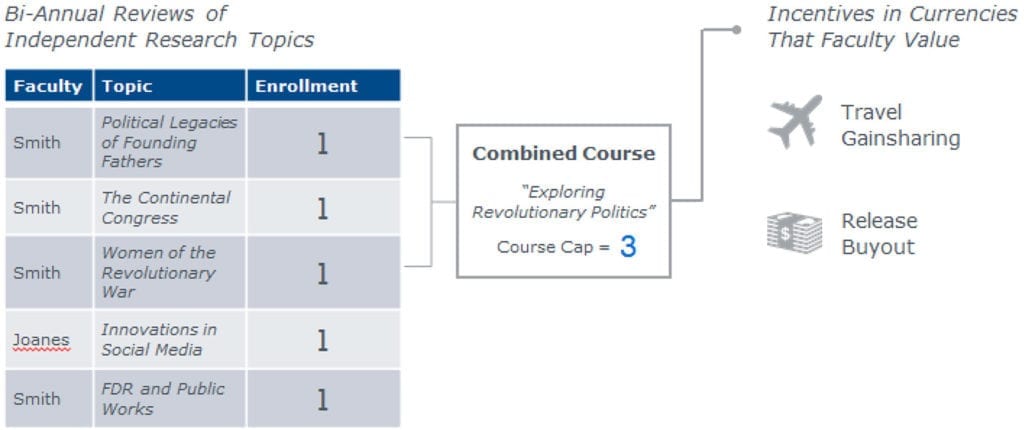What’s the Real Cost of Independent Study?
Why you should routinize independent study reviews
As students increasingly express interest in independent study opportunities, colleges and universities feel the pressure to provide the necessary faculty support. But many faculty members already feel that they lack the resources to oversee independent study, and also take on additional teaching and service responsibilities. Due to tight budget constraints, this leaves many institutions in an impasse, as they are unable to hire more faculties to help share the responsibility.
Although many institutions feel that the issue is lack of staff, in reality, it is often a result of inefficient processes and resource allocation. Specifically, institutions lack the mechanisms to properly track staff members’ efforts as compared to the individual attention students actually receive.
Since the demand for independent study courses will only continue to grow, our research team used member data to better assess the most meaningful independent study trends, and strategies that can help institutions offer more budget-friendly courses.
Cost of individualized attention
The first issue that EAB researchers addressed was faculty time. While faculty members often cite the quantity of individualized attention as a significant time constraint, data shows that this isn’t representative of the average student experience. Overall, nearly 10-22% of faculty efforts are invested in individual instruction sections. But individual instruction only represents 2-6% of the average students’ total credit hours.
Faculty investment in individual instruction

This data demonstrates a significant gap between the number of individual sections faculty teach and the number of students who actually enroll in the specialized instruction.
Independent study courses are not just for the liberal arts
Contrary to popular rhetoric, independent study courses are not only found in upper division and liberal arts programs. In reality, institutions increasingly offer independent study courses in lower division courses and more technical disciplines, such as agriculture and engineering. As the graph below shows, the number of independent study courses outside of the humanities is comparable.
Independent study courses are less concentrated in the liberal arts

If institutions want to meet this demand, they must first address the staffing inefficiencies in the already existing independent study offerings. Otherwise, institutions will potentially have to unnecessarily adjust their staffing budget to account for the additional courses.
Formalize independent study reviews
The most cost-effective solution is to conduct regular assessments of independent study topics. Bi-annual reviews can help the institution identify opportunities to combine courses with similar topics and free up faculty time. Small group courses allow students to have an individualized experience, without extra cost to the institution.
Bi-annual assessment of independent study topics

Deans should implement meaningful incentives for those faculty members who are hesitant or unwilling to combine related independent study courses into a single course. These incentives, such as travel gainsharing and release buyout, reward faculty for efficiency and provide the institution with long-term cost savings.
This resource requires EAB partnership access to view.
Access the research report
Learn how you can get access to this resource as well as hands-on support from our experts through Strategic Advisory Services.
Learn More